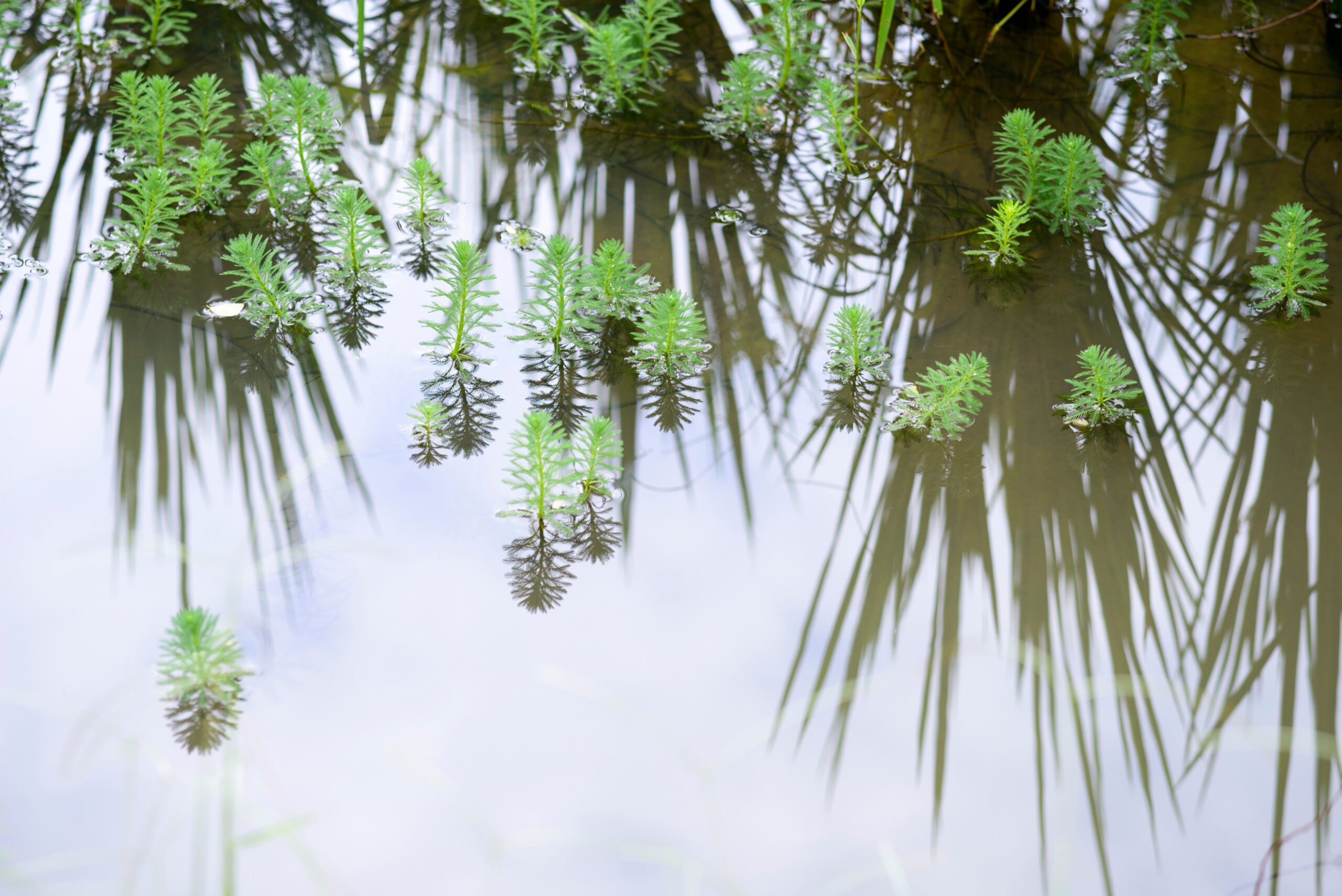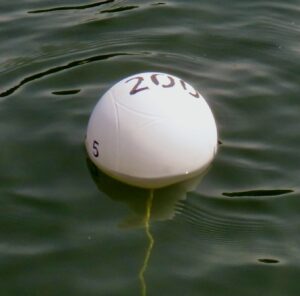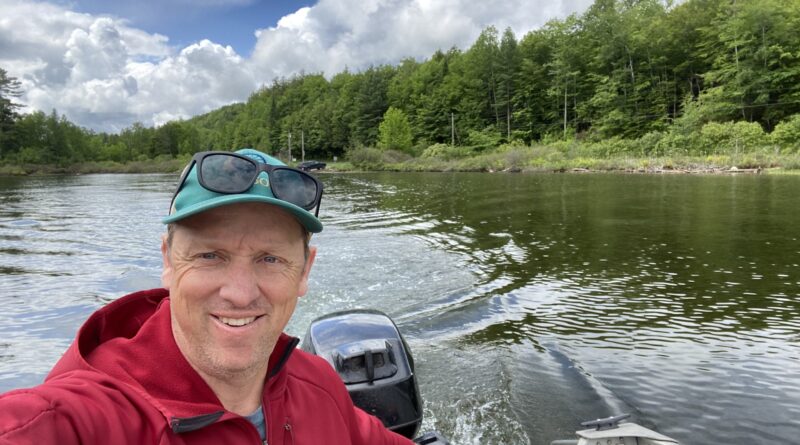How to Save Our Lakes – An Expert Weighs In
Each summer we hear about algae blooms, cyanobacteria and elevated phosphorous levels in some of Vermont’s largest lakes. But how are the smaller inland lakes doing? We asked Oliver Pierson, the Lakes and Ponds Program Manager with the Vermont Department of Environmental Conservation to weigh in. To see for yourself how individual lakes are faring, consult the interactive Vermont Inland Lake Scorecard. (dec.vermont.gov/watershed/lakes-ponds/data-maps/scorecard)
So just how are Vermont’s inland lakes doing?
We’re lucky to be stewarding some of the highest-quality waters in the nation. But that doesn’t mean that we don’t have water quality challenges and some water quality trends that we’re very concerned about.
We have good summer data on 75 inland lakes, and we have evidence that the water quality is deteriorating on about 30% of those, using the total phosphorus data as our indicator. Increases in phosphorus usually bring increases in plant growth, decreases in water clarity, increases in algae, and in the most extreme cases, cyanobacteria blooms.
A deteriorating trend doesn’t mean the lake has blooms or the lake is full of invasive plants or has low clarity. It just means that water quality conditions are heading in the wrong direction.
How do you fight phosphorous build-up?
For most lakes, the source of excess nutrients and phosphorus is from the watershed. It’s from nutrients and pollutants running into streams and lakes and also from stormwater runoff. The best way to address the water quality is to reduce what we call external loading of nutrients into the lake. Our best management practices for this can involve road improvements, reducing stormwater runoff from lakeshore properties, or improving agricultural practices.
The state has also had to treat lakes with high phosphorous with alum, correct?
Alum treatments are a last resort, and we have only used these treatments twice in Vermont: in 1986 in Lake Morey and in 2014, in Ticklenaked Pond in Ryegate (Ticklenaked was then removed from the “Impaired” list in 2020.)
The treatment uses aluminum or aluminum sulfate to essentially bind with the phosphorus in the water column so that it settles to the bottom of the lake and becomes inert. But alum treatments are very expensive, don’t last forever, and there are some concerns about the toxicity of aluminum that we need to work through. Alum treatments can buy you between 10 and 30 years. Lake Morey was treated in 1986 and we’re just now looking at treating it again and, possibly Lake Carmi, as well.
The Inland Lake Scorecard notes unusually high levels of mercury, even in remote waters like Grout Pond. Why is that?
Mercury in our lakes is related to atmospheric deposition, primarily from when we didn’t have as stringent air quality pollution laws as we do today. One of the challenges with mercury is that we don’t have a ton of data. About 10 years ago, we did a study of 93 randomly selected lakes, ( half of those were in New Hampshire, so about 50 in Vermont) to determine mercury levels. We found that about 30% of lakes in Vermont had mercury in fish tissue that exceeded EPA limits for fish consumption. With that data fish consumption advisories for certain lakes are set accordingly.
What is the state policy on treating milfoil?
Lake associations will often start with approaches to limit the spread of invasive Eurasian Watermilfoil that don’t involve chemicals, such as mats or suction harvesting.
The legislature passed an aquatic nuisance control bill so to use pesticides, such as ProcellaCOR, there’s a whole process where a lake association or a municipality has to demonstrate that the proposed project can meet five statutory findings before DEC will issue a permit. In addition, we put in other checks and balances to ensure that there are no unacceptable negative impacts from an herbicide treatment.

There’s been a lot of controversy over using a herbicide such as ProcellaCOR to treat milfoil on Lake Bomoseen. How have you seen it work elsewhere?
We have anywhere from 5 to 10 active permits now for using ProcellaCOR. It really only targets milfoil and, based on our pre- and post-treatment surveys, it actually helps some native species.
One example where it has been successfully used is Lake Iroquois in Hinesburg. That lake had a serious milfoil infestation, particularly in the northern part of the lake near the access area and beach. There was a treatment done in 2021 that knocked back most of the milfoil on the lake. Usage of that lake I think tripled after the treatments, and there were no documented non-target impacts.
Lake Iroquois, Lake Dunmore and a few other lake associations are putting out 200-foot buoys to help educate boaters about the law that mandates “no-wake zone within 200 feet of shore.” How does reducing wake help?
The law says that within 200 feet of shore you can’t exceed five miles per hour or you have to use your motor in a way that does not generate a wake within 200 feet of shore. Big waves can cause shoreline erosion and stir up lake bottom sediments, which in turn can increase phosphorous concentrations and reduce water quality.
But the big focus now is on wake boats – the boats that take on water ballast so they can create waves large enough to surf. New regulations were drafted this winter to limit wake boats to larger and deeper lakes or sections of lakes. The other problem with these craft is that because their ballast tanks can’t be fully drained, as they move from lake to lake, they can transport invasive species like zebra mussels.

How do you enforce these rules?
We really ask for the public’s help. There are only about 35 Vermont Fish & Wildlife game wardens who have law enforcement authority in the state and fewer than 10 State Police marine division employees who handle law enforcement on our public waters. That’s a limited number of people for 800 lakes and ponds.
Frequently, what happens is if a member of the public observes a potential violation (like someone has brought a jetski onto a lake where jet skis are prohibited or someone is using their motorboat at speed in a no-wake, 5 mph zone) they will then call Vermont Fish & Wildlife or the state police marine division and sometimes even local law enforcement. If those folks are able, they’ll respond. If they observe the potential violation in process, they can issue a citation.
If you could ask our readers to do three things to protect our lakes, what would they be?
First, we want people out enjoying our lakes and we want the public to help preserve them. Second, read the notices at boat access areas or online about the rules for each local lake.
The lakes are a shared resources and they are fragile. Responsible recreation goes a long way toward keeping them as close to their current condition as possible.
Third, and I think the most important piece of advice is when you take your boat out of the lake, please clean, drain and dry your boat. That’s critical to reduce the spread of invasive species. You know, over 100 of our lakes are infested with invasive species now and they can cause serious problems, both for recreation and for the ecosystem.

